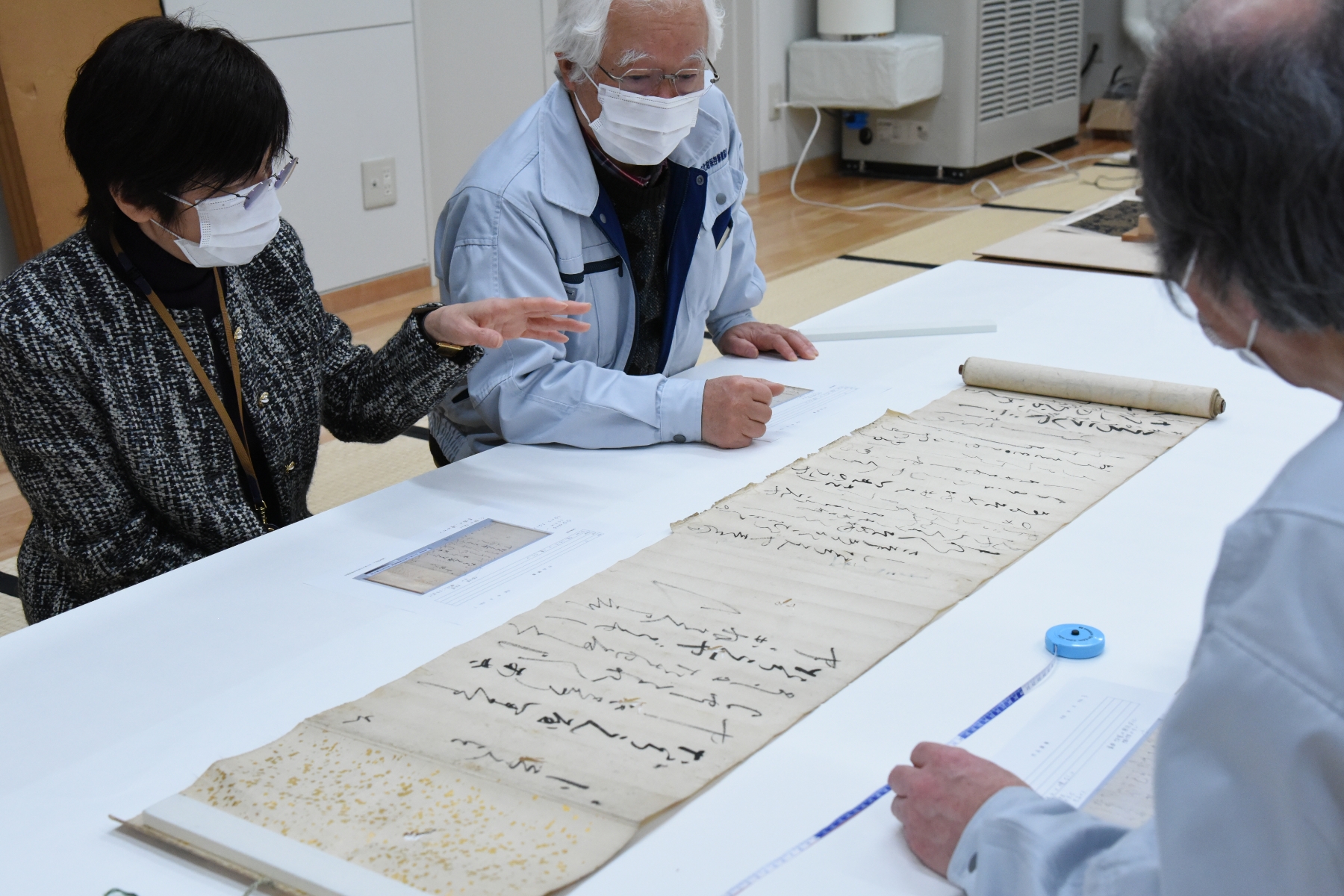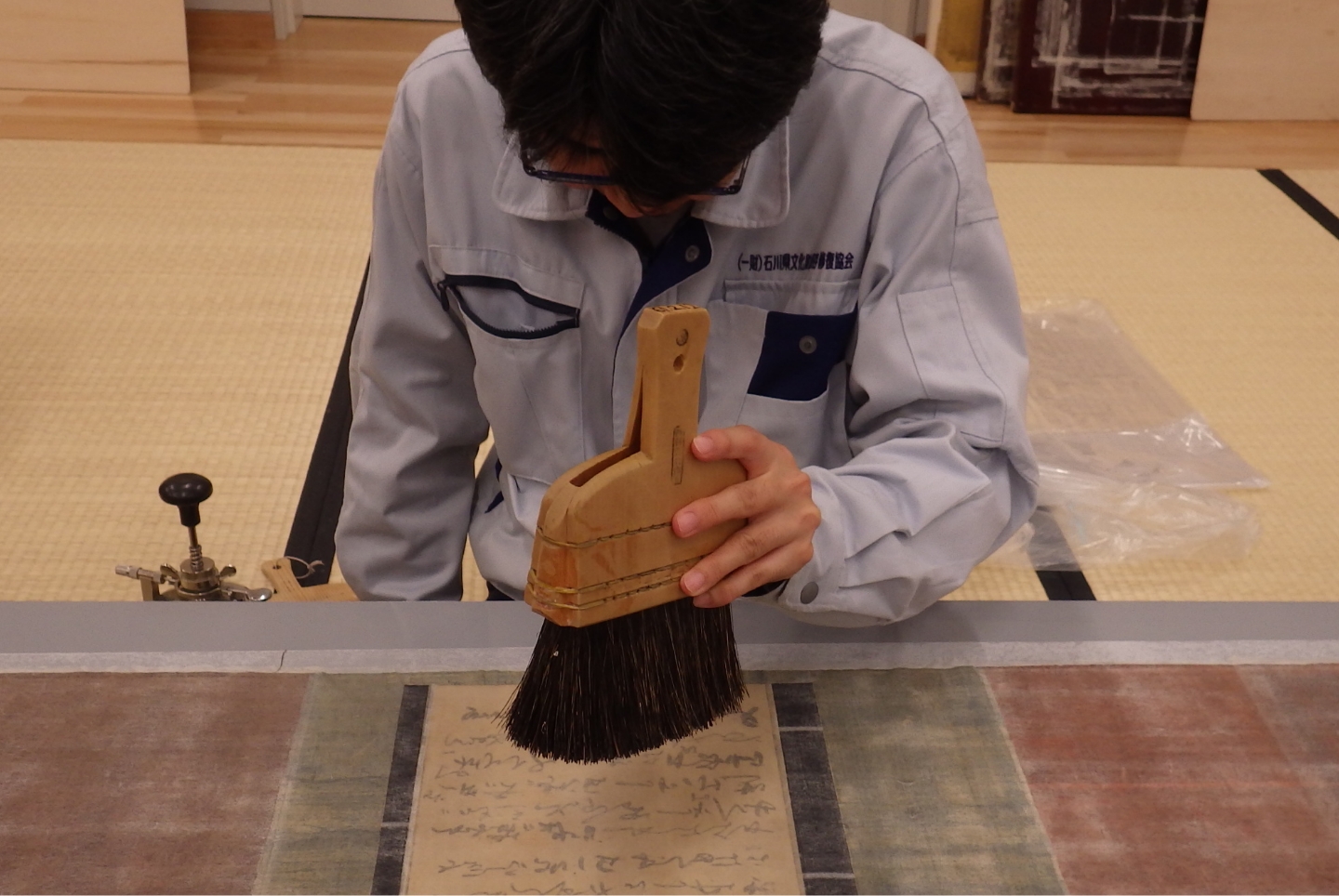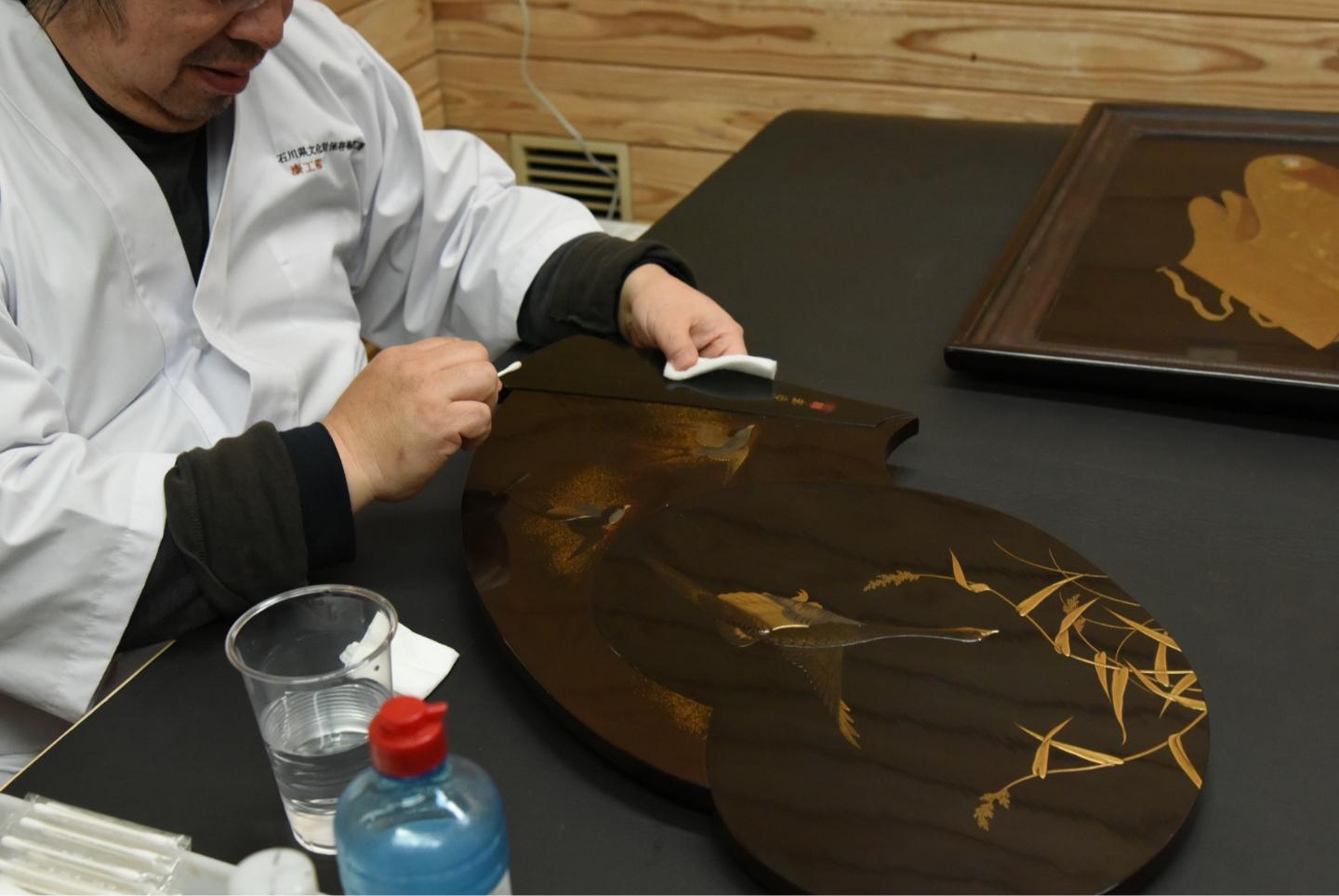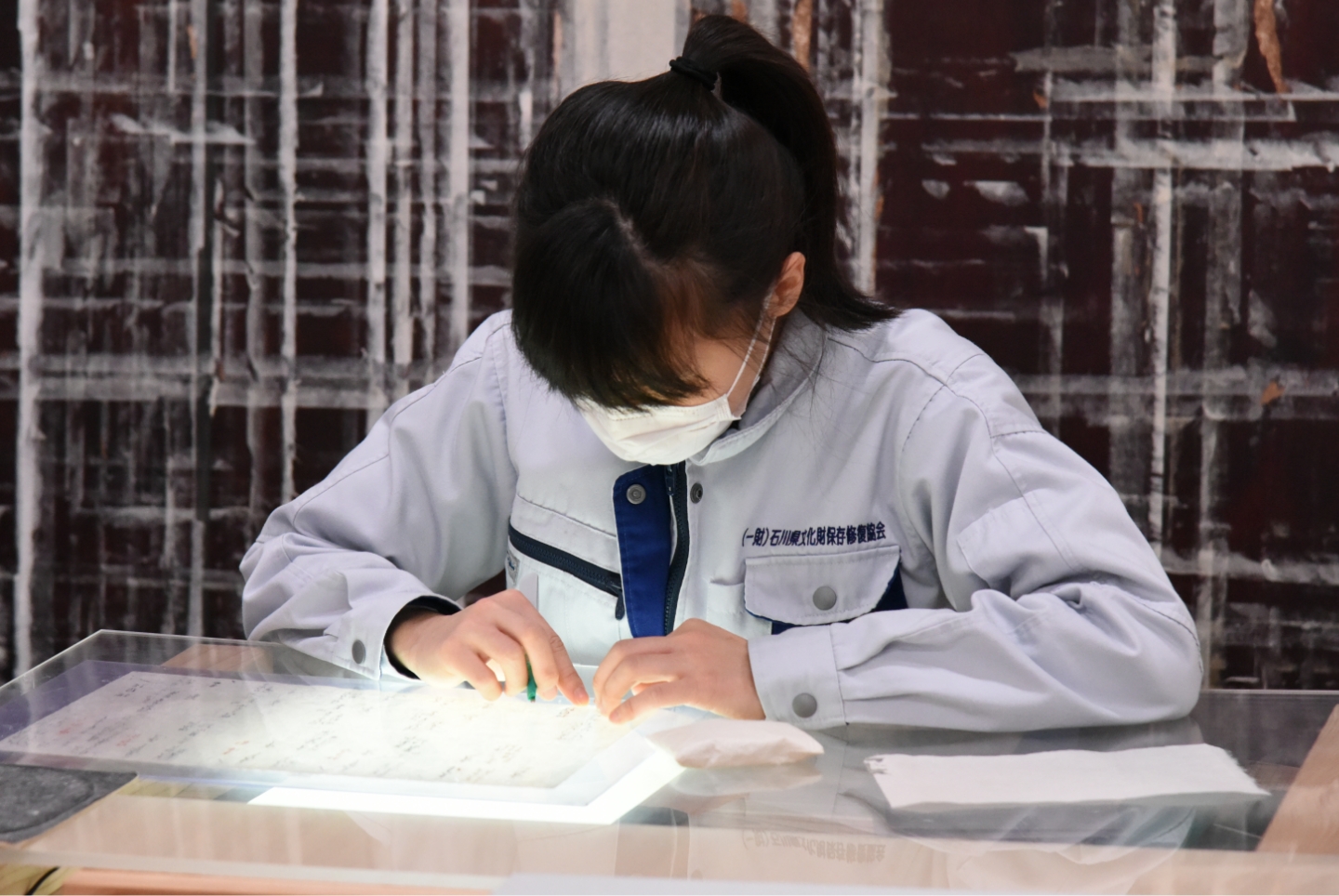Restoration
目次
Philosophy of restoring cultural properties
In principle, we maintain the status quo in restoring the cultural properties, to keep its historical and artistic values. So, we restore them in a reversible manner, with materials which not damage them even after many years.
Restoration works provide us various information about the cultural properties, and it is important to record them.
How to restore
Each objects have different materials, and degradation factors, but we can show the general restoration steps below.
1.Pre-research
We research the cultural properties with non-destructive analysis: its materials, techniques, condition, and so on. For example, we do structural survey by microscope observation, infrared photography, or X-ray radiography, and material survey by fluorescence X-ray.
2.Determination of the restore course
The course of restoration is determined in consideration of the cultural property value, and results of pre-research. Not only members of the conservation studio, but the literates, curators, and owners consult on the course. When uncertain situation occurred while restorations, the consultation will surely be held.

3.Conservation and Restoration manners
On the basis of pre-research results, we start to restore. Basically, we use traditional techniques and materials. They are safe, natural materials, for example, wheat starch paste, Japanese paper, urushi lacquer, animal skin glue, and so on, which have known as good materials for longtime conservation. But in some cases, we use new scientific technology or materials, when the traditional one seem to be inadequate. It is important to have large stock of knowledge and experiences, and choose the best manner from them.



4.Record the restoration
We make records of restorations without fails. Records, such as restoration date, place, manners and materials adopted; precious information about the cultural properties, are useful for following restorations.
Accept of conservation
What we conserve are below:
- Cultural properties designated by national, or local governments
- Cultural properties which public institutions own
- Cultural properties which museums own
- Cultural properties equivalent to above, which we deem to be necessary to conserve
